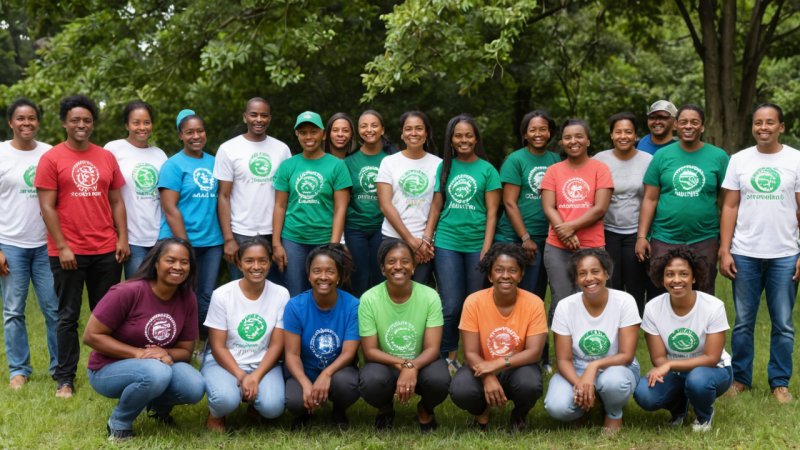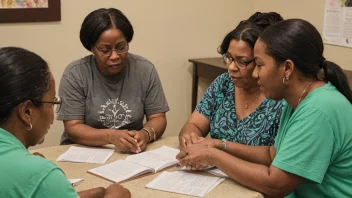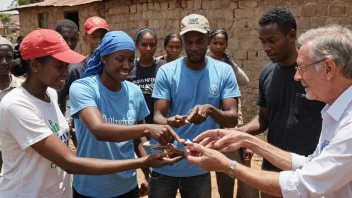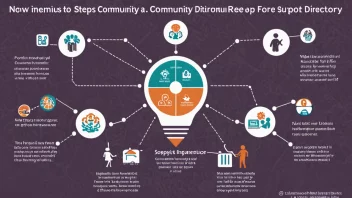As the world grapples with the escalating climate crisis, the intersection of climate change and humanitarian work has never been more critical. Climate justice advocates argue that the impacts of climate change disproportionately affect marginalized communities, often exacerbating existing inequalities. Humanitarian aid organizations are increasingly finding themselves on the front lines of this dual challenge, necessitating a thoughtful approach to advocacy that incorporates climate justice principles. This article explores how individuals and organizations can effectively advocate for climate justice within humanitarian contexts, highlighting successful initiatives, actionable strategies, and the vital need for collaboration.
Understanding Climate Justice
Climate justice is rooted in the idea that climate change is not only an environmental issue but also a social and economic one. It recognizes that those who have contributed the least to climate change—often the poorest and most vulnerable populations—are the ones who suffer its severest consequences. Advocating for climate justice means addressing these inequities and ensuring that climate action is inclusive, equitable, and just.
The Principles of Climate Justice
At its core, climate justice encompasses several key principles:
- Equity: Recognizing the disproportionate impact of climate change on marginalized communities and advocating for equitable resource distribution.
- Participation: Ensuring that affected communities have a voice in decision-making processes regarding climate action and humanitarian interventions.
- Accountability: Holding governments and corporations accountable for their contributions to climate change and their responsibilities towards affected communities.
- Interconnectedness: Understanding that climate change is a global issue that requires collaborative efforts across borders and sectors.
The Role of Humanitarian Aid in Climate Justice
Humanitarian aid organizations play a pivotal role in addressing the impacts of climate change, especially in regions that are most vulnerable to its effects. These organizations are uniquely positioned to advocate for climate justice by integrating climate considerations into their work. Here are some ways in which humanitarian aid can contribute:
1. Incorporating Climate Risk Assessments
Humanitarian organizations can enhance their response efforts by conducting climate risk assessments in the communities they serve. This involves analyzing how climate change impacts local livelihoods, health, and infrastructure. By understanding these risks, organizations can tailor their interventions to address the specific needs of vulnerable populations.
2. Promoting Sustainable Practices
Humanitarian aid can also advocate for sustainable practices within affected communities. This can include promoting the use of renewable energy sources, encouraging sustainable agriculture, and providing training on climate-resilient practices. By empowering communities with knowledge and resources, humanitarian organizations can help them adapt to changing environmental conditions.
3. Building Resilience
Resilience-building is a critical component of climate justice advocacy. Humanitarian organizations can work with communities to develop disaster preparedness plans, establish early warning systems, and enhance local capacities to respond to climate-related shocks. This not only protects lives but also strengthens community bonds and fosters a sense of agency.
Strategies for Effective Advocacy
Advocating for climate justice in humanitarian contexts requires a multifaceted approach. Here are some effective strategies that individuals and organizations can employ:
1. Raising Awareness
One of the first steps in advocacy is raising awareness about the links between climate change and humanitarian issues. This can be achieved through:
- Hosting workshops and informational sessions to educate community members.
- Creating informative content such as articles, videos, and infographics that highlight the urgency of climate justice.
- Engaging with local media to share stories of affected communities.
2. Building Partnerships
Collaboration is essential for effective advocacy. Humanitarian organizations should seek partnerships with environmental groups, local governments, and community leaders to amplify their efforts. By working together, these entities can create a more powerful collective voice for climate justice.
3. Engaging in Policy Advocacy
Advocating for policy change at local, national, and international levels is vital for achieving climate justice. This includes:
- Lobbying for policies that prioritize climate resilience and social equity.
- Participating in climate negotiations and forums to ensure marginalized voices are heard.
- Supporting legislation that addresses the root causes of climate change and promotes sustainable development.
4. Empowering Communities
Empowering communities to advocate for their own needs is a cornerstone of effective climate justice advocacy. This can involve:
- Providing training on advocacy skills, such as public speaking and organizing.
- Encouraging community-led initiatives that address local climate challenges.
- Facilitating platforms for marginalized voices to share their experiences and solutions.
Success Stories in Climate Justice Advocacy
Numerous initiatives around the world illustrate the power of advocacy in achieving climate justice within humanitarian contexts. Here are a few notable examples:
1. The Global Climate Justice Movement
Grassroots movements like Fridays for Future and Extinction Rebellion have successfully raised global awareness about climate justice, mobilizing millions to demand action. These movements emphasize the need for systemic change and have inspired local communities to advocate for their rights.
2. The Climate Justice Alliance
This coalition of organizations and communities works to advance climate justice through policy advocacy, community organizing, and education. Their efforts have led to significant policy changes that prioritize the needs of frontline communities in climate action plans.
3. Community-Led Adaptation Projects
In various regions, community-led adaptation projects have demonstrated the effectiveness of integrating local knowledge into climate resilience strategies. These projects empower communities to identify their own needs and solutions, fostering a sense of ownership and agency.
Challenges and Opportunities
While advocating for climate justice in humanitarian contexts is essential, it is not without its challenges. Some of the obstacles include:
- Funding Constraints: Many humanitarian organizations struggle with limited resources, which can hinder their ability to address climate issues.
- Political Resistance: Advocacy efforts may face pushback from governments or corporations that prioritize short-term economic interests over long-term sustainability.
- Fragmented Efforts: The lack of coordination among various stakeholders can dilute advocacy efforts and hinder progress.
However, these challenges also present opportunities for growth and innovation. By fostering collaboration, leveraging technology, and engaging diverse stakeholders, advocates can amplify their impact and drive meaningful change.
Conclusion
Advocating for climate justice in humanitarian contexts is not just a moral imperative; it is essential for building a more equitable and sustainable future. By understanding the principles of climate justice, incorporating climate considerations into humanitarian work, and employing effective advocacy strategies, individuals and organizations can make a significant difference. As the climate crisis continues to unfold, it is crucial that we unite our efforts, amplify marginalized voices, and work towards a just and resilient world for all.






